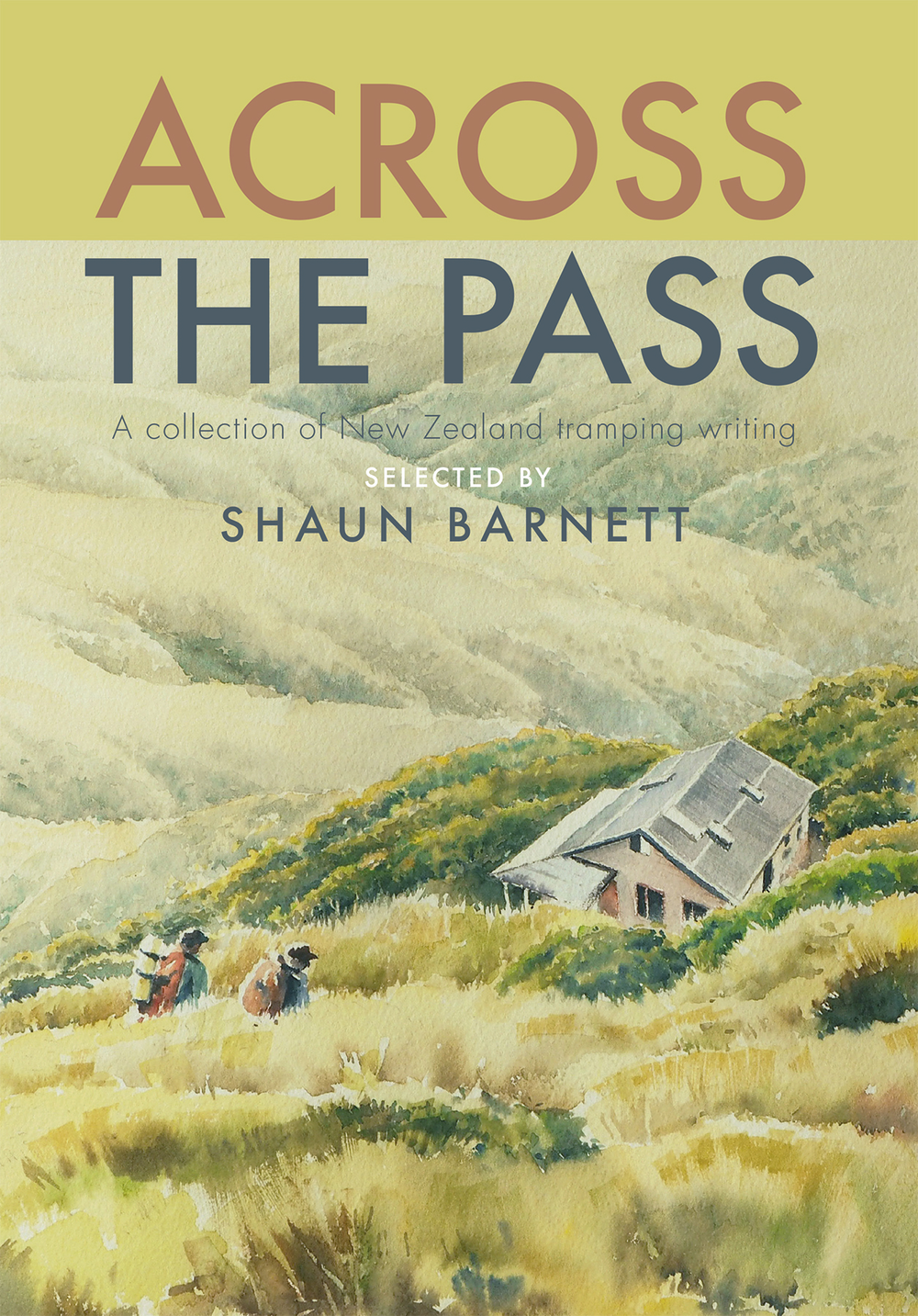
Across The Pass - Book Review
Across The Pass. A collection of New Zealand tramping writing. Selected by Shaun Barnett. 2021. Otago University Press.
Review by Ross Cullen
Are trampers more reluctant to write about their recreation than are mountaineers, anglers, hunters, explorers? Shaun Barnett judged that was correct when he commenced tramping in the 1980s, but was delighted 30 plus years later to find that trampers had long put pen to paper to describe their backcountry experiences. Barnett has metaphorically tramped far and wide—uncovering tramping literature in books, magazines, newsletters, annuals, even some previously unpublished pieces—while assembling Across The Pass, a handsome hardcover anthology of New Zealand tramping writing spanning almost 180 years.
Barnett has selected 100 literary pieces for inclusion and grouped them in six parts. The first, ‘Footprints’, includes chapters on Māori knowledge of trail-making and routes, early Pākehā explorers such as Colenso, Heaphy, Dobson, Brunner and the emergence of tramping in the late nineteenth century. ‘Stuffing Packs and Making Tracks’ focuses on the development of tramping in the twentieth century and particularly the role of tramping clubs. Chapters on camping, staying in huts, track-cutting, mountain-shelter construction are grouped in ‘Under Canvas or Corrugated Iron’. ‘Through the Bush and Mountains’ includes chapters with a strong sense of journey and I guess will appeal to many mountaineer readers. Tramping is very often a group activity and ‘Companions’ collects chapters that explore companionship, camaraderie, sometimes conflict and encounters with flowers, birds and bush. Reflections, thoughtful musing, and some humour, including the editor’s fantasy tramping chapter, are grouped in ‘The Tramping Experience’.
Many contributions are fragments of longer pieces, selected for their writing quality, and are sometimes placed adjacent to a piece from a different era to provide contrast—a tactic that works well. Read Kathy Ombler (2020) on ‘That’s Tongariro’, then William Howlett (1894) ‘Parke’s Peak Ascended by Ladies’; or try Thomas Brunner (1847) ‘The Great Journey’, before reading Nic Low (2021 ‘Nõti Hinetamatea (Copland Pass)’. There are many chapters that I really enjoyed reading (in a few cases rereading as they are classics: Paul Powell – Cave Camp, Brian Turner – Mist out on Mount Hutt, John Mulgan – Around Ruapehu, or Jakob Lauper – Pushing his luck). I read every page in the book without being tempted at any time to turn the pages and find a more interesting chapter.
At times I felt unsatisfied as many contributions are very short—some only one page in length—and I longed sometimes for bigger chunks of reading despite the inherent quality of, for example, Sam Hunt’s poem ‘White Gentian’, Anonymous ‘Lady Tramper Throws Bombshell’ and George Moir’s thoughtful comments in ‘Personnel’. Longer chapters with drama were for me the highlights in the anthology. I was gripped by Gary Goldsworthy’s tragic narrative in ‘Dark Surprise’, and who could not enjoy John Rhodes’ tale of ‘Tramper Goes Alpine’.
A simple count and calculation reveals the average chapter length is 3.25 pages. By contrast, the average chapter length is 3.92 pages in Laurence Fearnley and Paul Hersey’s anthology To The Mountains. Does that say something about tramping as opposed to mountaineering? I have dabbled in both, but have fewer experiences to reflect on than many people who have accumulated vast outdoor experience. Hill walkers and mountaineers are goal driven and their writing often follows a standard structure—approach, ascent and return, with undercurrents of risk and uncertainty of outcome. The cover of To The Mountains portrays that well—a climber cramponing towards the one kilometre-distant summit of Aoraki/Mount Cook. Tramping is purposeful—there is a destination, but accommodation at the end of the days is often paramount. The cover of Across The Pass picks up that aspect and depicts two trampers descending through low scrub towards a welcoming hut.
While the anthology collects writing from 90 plus people, the multiple roles of Shaun Barnett are significant contributors to its overall quality. His introductory chapter succinctly states the origins of tramping as a noun and recreation, describes his uncovering of diverse tramping literature, and sets the scene for following chapters. A paragraph introduces each of the 100 chapters and their authors, including two written by Shaun—Dad Versus Wild, and Beast Bot Forward—both are gems. The book concludes with sources for each chapter, a six-page summary of tramping literature, and five pages of further reading for those eager to read more. Get your hands on a copy of Across The Pass and sample it first.
